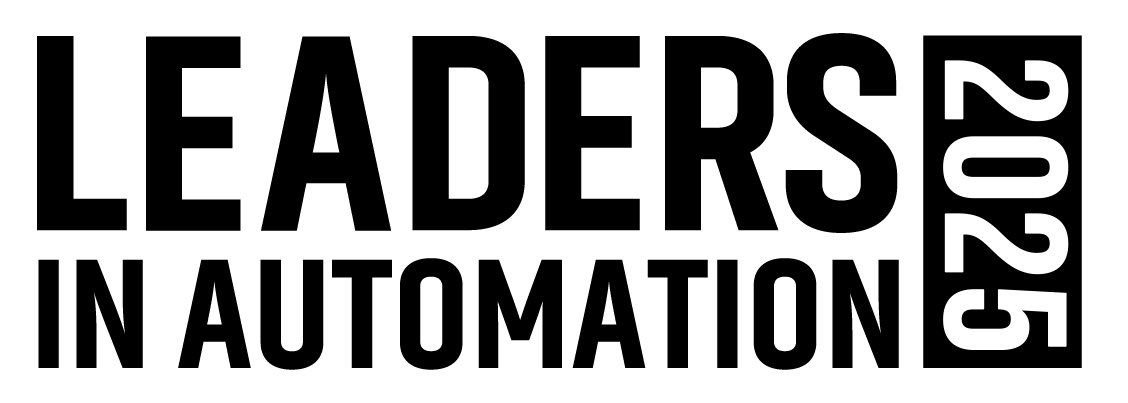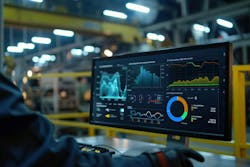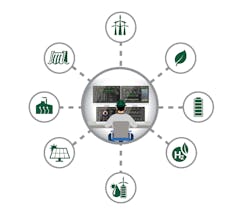How SCADA Can Solve Data Integration Challenges
Why this article is worth reading:
- As power companies build hybrid projects combining solar, wind, battery storage and hydrogen assets, they face the challenge of integrating dozens of different control systems and data types from various manufacturers.
- Purpose-built SCADA solutions replace fragmented custom integrations with a single standardized interface, giving operators real-time access to critical data needed for efficient grid management and decision-making.
- With comprehensive visibility into real-time and predictive data, operations teams can optimize when to generate, store or sell energy to the grid, maximizing both grid stability and commercial value while reducing operational costs.
Power generation organizations are building or acquiring a wide array of new assets, principally photovoltaic (PV) solar, wind, hydro, battery storage and hydrogen. Not only do these new technologies independently add complexity to power operations, but since most organizations add multiple types, this further complicates matters.
As demand for renewable energy production assets has increased, so too has the size, scale and complexity of renewables projects. This has led many power generation companies to develop hybrid projects with multiple different asset types working together. For example, a PV solar plant might also take advantage of wind turbines and battery storage, or even electrolyzers to generate green hydrogen. These new, more complex infrastructures might all be physically connected inside a single fence, or they might be aggregated at the fleet level across many different locations.
But when businesses aggregate many different asset types, they also inherit many different control interfaces and data types. Fortunately, modern green energy supervisory control and data acquisition (SCADA) software, together with fit-for-purpose green energy human machine interfaces (HMIs), can be used to standardize and aggregate essential data from assets in the field, through the edge and up to the enterprise where they provide critical operational visibility. This data mobility enables businesses to unlock new, more dynamic operating modes, helping them make better decisions to safely manage the grid while getting the most benefit from their investments.
How SCADA brings asset data together
A power generation site will likely have dozens of varying assets from an array of manufacturers, each with distinct control technology. If the control systems for these assets are not integrated, critical data will be trapped in silos around the facility and across the enterprise.
Operations and engineering teams can make continuous adjustments, such as changing operations to protect individual assets to support longer equipment lifespans.
In addition, when many different assets using varied control technologies are either unlinked or connected via complex and often fragile custom integration schemes, teams will lack fast access to the data they need to efficiently and cost-effectively provide the right amount of energy to the grid as production fluctuates. Instead, they will find themselves wasting energy through curtailment or potentially facing fines for failing to meet contractual obligations.
A purpose-built green energy SCADA solution can support an organization’s different technologies with a single standardized, intuitive HMI for the operator interface. The SCADA system replaces the need for complex, custom integration with seamlessly integrated automation from top to bottom, delivering data to a single place where it can be used to monitor key performance indicators and drive better decision making that can increase availability and production, while reducing operations and maintenance costs.
The value of increased data mobility
Improved access to data and the generation of actionable insights are critical to unlocking more flexible, stable interaction with the grid. The primary reason: easy access to data insights makes it possible for organizations to maximize grid stability. This data access is critical because renewable energy generation is dynamic — assets may be overproducing one day and underproducing the next, based on environmental factors. Because the grid was built for stability, that fluctuation can cause problems if excess energy cannot be curtailed or energy deficits cannot be supplemented.
Best-in-class green energy SCADA software brings all an organization's technologies into a single HMI.
The visibility offered by green energy SCADA systems with a single-source-of-truth HMI empowers operations teams to leverage real-time, historical and predictive data to plan around. Teams can adjust operations to ensure they run at the level that meets the needs of their contracts. They can also make continuous adjustments, such as changing operations to protect individual assets to support longer equipment lifespans.
Increased data mobility across the enterprise truly starts to shine when using the same real-time data necessary for grid stabilization to maximize the commercial value of generating electricity. In such a scenario, organizations are not just helping solve the grid stability problem. They are also using the same data to make the right decisions for successful energy trading because they can easily see when it is most profitable to put energy onto the grid, versus when there might be increased benefits to storing it.
Capitalizing on such decisions can bring immediate and significant financial and operational benefits, but it is not possible without reliable data.
James Fraser has almost 25 years of automation experience in the power industry. As vice president of renewables, he is responsible for leading the continued development and execution of Emerson’s renewables strategy.
More energy and sustainability coverage from Automation World:
About the Author

Leaders relevant to this article:



